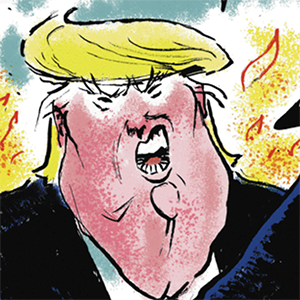Editorial: Grousing on housing -- Economic concerns drove Trump victory
Published in Op Eds
In the wake of Democratic voters in cities and suburbs around the country staying home or trending right, resulting in big swings to Donald Trump almost uniformly, analysts and commentators have cast about for answers. We can posit at least one relatively straightforward one: lack of housing.
The motif of voters ignoring everything else that Trump said and promised because egg prices are too high is a simplistic one that can’t hope to clarify the complexity of the inputs that went into tens of millions of votes. Yet we do know that, when it came down to the wire, a lot of voters made their choice with economic issues and costs in particular in mind.
Many felt that Trump — a man who ran several businesses into the ground and ballooned the national deficit to stunning heights while presiding over a sluggish COVID response — would be better for the economy, mostly on the back of the memory of groceries being cheaper five years ago. And while much of this discourse has focused on consumer goods, there’s little doubt that some of this anxiety is concentrated in what is consistently the biggest piece of household spending: Having a household.
Housing has never been more expensive, on either the renting or buying front. While the problem is most acute in large coastal cities like New York and San Francisco, it is now a national problem, spurred by a failure across the country to build and finance as much affordable housing as is necessary. Some of this might be a capital problem, with the free money running out as the Fed raised rates to combat inflation, but policy and regulations are major factors.
Elected officials have over years constructed elaborate and wholly counterproductive zoning, tax and regulatory schemes to all but prevent the level of development that’s actually needed, spurred on by loud NIMBY voices who care more about immediate property values or neighborhood character than about the long-term sustainability of their communities.
Now we are seeing the results: this has not made neighborhoods resistant to gentrification, but supercharged it. The dwindling stock of available housing just gets more expensive, following the laws of supply and demand.
The mystery of why New York City voters swung so decisively in the direction of Trump is one with many answers, but we don’t feel it’s a stretch to point partly at the spiraling housing costs and the policies that allowed them.
New York City has lost congressional representation and is bleeding the middle class, all because we’ve failed over and over to even near the level of housing construction that we need for many years; if anything, we’ve gone in the opposite direction, throwing roadblocks in the path of the housing that we need.
We have some opportunities now to course correct. The City Council now has before it a package of zoning changes that can help stanch some of the bleeding, and have put forward their own funding initiatives to tackle the issue. If they want to play NIMBY politics now, they should remember that this is not just a practical issue but an acutely political one. Let’s make the housing.
___
©2024 New York Daily News. Visit at nydailynews.com. Distributed by Tribune Content Agency, LLC.




























































Comments